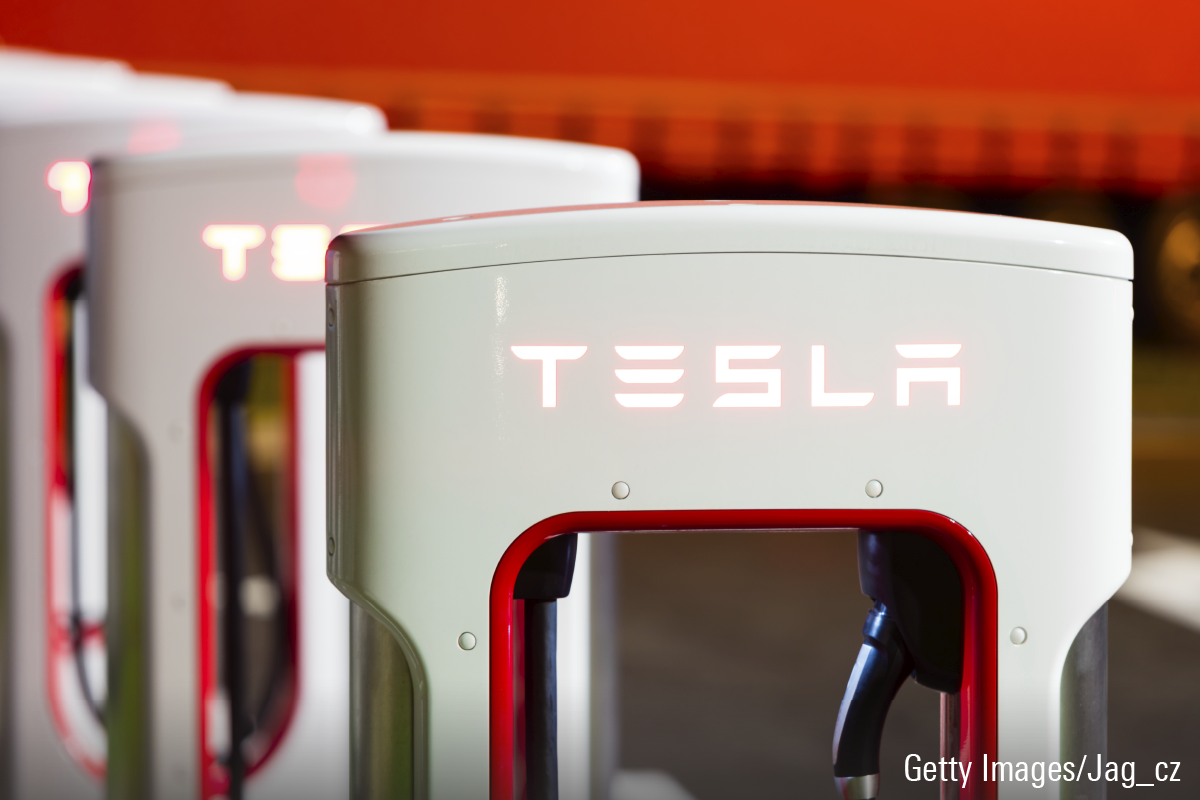Is Tesla Stock a Buy After the Split?
The EV market leader’s strong brand drives pricing power, Morningstar’s analyst says.

Tesla TSLA is the largest battery electric vehicle maker in the world. In less than a decade, the company went from a startup to a globally recognized luxury automaker with its Model S and Model X vehicles. In addition to luxury autos, the company competes in the midsize car and crossover SUV market with its platform that is used for Model 3 and Model Y vehicles. Tesla also plans to produce and sell new vehicles over the next several years. These include a light truck, a semi truck, a sports car, and a platform that will be used to make an affordable sedan and SUV. Tesla’s strategy is to maintain its market leader status as EVs grow from a niche auto market to reaching mass consumer adoption.
Key Morningstar Metrics for Tesla
- Fair Value Estimate: $255
- Star Rating: 3 Stars
- Economic Moat Rating: Narrow
- Moat Trend Rating: Stable
Economic Moat Rating
We award Tesla a narrow economic moat rating. Its moat stems from two of our five moat sources: intangible assets and cost advantage. The luxury automaker’s brand cachet commands premium pricing and is not likely to be impaired anytime soon as other automakers move into the battery electric vehicle space, because we expect Tesla to keep innovating to stay ahead of startup and established competitors. We think Tesla benefits from a cost advantage in EV production thanks to its manufacturing scale and expertise, which allows it to make its vehicles cheaper than its competitors can.
Read more about Tesla’s moat rating.
Fair Value Estimate for Tesla Stock
Our fair value estimate is $255 per share, which reflects the recent 3-for-1 stock split. We use a weighted average cost of capital of just under 9%. Our equity valuation adds back nonrecourse and nondilutive convertible debt. Our scenario assumes Tesla increases its annual total vehicle delivery volume to roughly 5.4 million by 2031. Combined with a shift to producing a greater proportion of higher-priced Model Y vehicles, we forecast gross margins will expand to nearly 38% from the 29% achieved in 2021, generating automotive profit growth in excess of revenue growth. We assume revenue growth and margin expansion from autonomous software sold on a subscription basis. We also assume the growth of the insurance business results in long-term profit growth in the services and other segment.
Read more about Tesla’s fair value estimate.
Risk and Uncertainty
Tesla carries tremendous uncertainties. Electric vehicles could remain a niche segment if mass-market consumers do not adopt the new powertrain technology because of its higher costs and worse function (range, recharge time, and availability of charging). EVs could also be disrupted by other powertrain technologies. The automotive market is highly cyclical and subject to sharp demand declines based on economic conditions. As the market leader in EVs, Tesla is subject to growing competition from traditional automakers and new entrants.
Read more about Tesla’s risk and uncertainty.
Tesla Bulls Say
- Tesla has the potential to disrupt the automotive and power generation industries with its technology for EVs, autonomous vehicles, batteries, and solar generation systems.
- Tesla will see higher profit margins as it reduces unit production costs over the next several years.
- Through the combination of its industry-leading technology and unique supercharger network, Tesla offers the best function of any EV on the market, which should result in its maintaining its market-leading status as EV adoption increases.
Tesla Bears Say
- Traditional automakers are investing heavily in EV development, which could result in Tesla losing market share and seeing a deceleration in sales growth as a result of increased competition.
- EV adoption is driven largely by government initiatives, such as regulations and subsidies, which will limit long-term market growth for Tesla.
- Solar panel and battery prices could decline faster than Tesla can reduce costs, resulting in little to no profits for the energy generation and storage business.
Remove the guesswork and make informed decisions faster. Morningstar Investor’s stock ratings, analysis, and insights are all backed by our transparent, meticulous methodology. Learn more and start a seven-day free trial today.
The author or authors do not own shares in any securities mentioned in this article. Find out about Morningstar’s editorial policies.

/s3.amazonaws.com/arc-authors/morningstar/ca8d2ce1-cd0f-433b-a52b-d163be882398.jpg)
/cloudfront-us-east-1.images.arcpublishing.com/morningstar/SACNVSNDS5FTTFAEDRHVHNFB7M.jpg)
/cloudfront-us-east-1.images.arcpublishing.com/morningstar/5GAX4GUZGFDARNXQRA7HR2YET4.jpg)
/cloudfront-us-east-1.images.arcpublishing.com/morningstar/Q34JH4TM3JHGRMOWGT7EPZBE3A.jpg)
:quality(80)/s3.amazonaws.com/arc-authors/morningstar/ca8d2ce1-cd0f-433b-a52b-d163be882398.jpg)